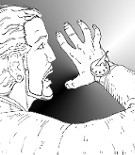Britomartis (nonfiction): Difference between revisions
(Created page with "'''Britomartis''' (Greek: Βριτόμαρτις) was the Minoan (nonfiction) goddess of mountains and hunting. == Description == She is...") |
No edit summary |
||
| (4 intermediate revisions by the same user not shown) | |||
| Line 1: | Line 1: | ||
'''Britomartis''' (Greek: Βριτόμαρτις) was the [[Minoan civilization (nonfiction)|Minoan (nonfiction)]] goddess of mountains and hunting. | '''Britomartis''' (Greek: Βριτόμαρτις) was the [[Minoan civilization (nonfiction)|Minoan (nonfiction)]] goddess of mountains and hunting. | ||
She is among the Minoan goddess figures that passed through the Mycenaeans' culture into classical Greek mythology, with transformations that are unclear in both transferrals. | She is among the Minoan goddess figures that passed through the Mycenaeans' culture into classical Greek mythology, with transformations that are unclear in both transferrals. | ||
| Line 9: | Line 7: | ||
The goddess addressed as "Britomartis" was worshipped in Crete as an aspect of Potnia, the "Mistress". | The goddess addressed as "Britomartis" was worshipped in Crete as an aspect of Potnia, the "Mistress". | ||
The oldest aspect of the Cretan goddess was as Mother of Mountains, who appears on Minoan seals with the demonic features of a Gorgon, accompanied by the double-axes of power and gripping divine snakes. | The oldest aspect of the Cretan goddess was as Mother of Mountains, who appears on Minoan seals with the demonic features of a Gorgon, accompanied by the double-axes of power and gripping [[Serpent (symbolism) (nonfiction)|divine snakes (nonfiction)]]. | ||
Her terror-inspiring aspect was softened by calling her Britomartis, the "good virgin", a euphemism to allay her dangerous aspect. | Her terror-inspiring aspect was softened by calling her Britomartis, the "good virgin", a euphemism to allay her dangerous aspect. | ||
| Line 15: | Line 13: | ||
She is also known as Diktynna (Δίκτυννα; derived by Hellenistic writers as from δίκτυα [''diktya''], "hunting nets"). | She is also known as Diktynna (Δίκτυννα; derived by Hellenistic writers as from δίκτυα [''diktya''], "hunting nets"). | ||
== | == In the News == | ||
<gallery> | |||
</gallery> | |||
== Fiction cross-reference == | == Fiction cross-reference == | ||
* [[Minoan civilization]] | * [[Gnomon algorithm]] | ||
* [[Gnomon Chronicles]] | |||
== Nonfiction cross-reference == | |||
* [[Gnomon Chronicles (nonfiction)]] | |||
* [[Minoan civilization (nonfiction)]] | |||
* [[Serpent (symbolism) (nonfiction)]] | |||
== External links == | == External links == | ||
* [https://en.wikipedia.org/wiki/Britomartis Britomartis] @ Wikipedia | * [https://en.wikipedia.org/wiki/Britomartis Britomartis] @ Wikipedia | ||
[[Category:Nonfiction (nonfiction)]] | |||
[[Category:Gods and goddesses (nonfiction)]] | |||
[[Category:Religion (nonfiction)]] | |||
Latest revision as of 17:15, 6 April 2024
Britomartis (Greek: Βριτόμαρτις) was the Minoan (nonfiction) goddess of mountains and hunting.
She is among the Minoan goddess figures that passed through the Mycenaeans' culture into classical Greek mythology, with transformations that are unclear in both transferrals.
For the Greeks, Britomartis was a mountain nymph (an oread) whom Greeks recognized also in Artemis and in Aphaea, the "invisible" patroness of Aegina.
The goddess addressed as "Britomartis" was worshipped in Crete as an aspect of Potnia, the "Mistress".
The oldest aspect of the Cretan goddess was as Mother of Mountains, who appears on Minoan seals with the demonic features of a Gorgon, accompanied by the double-axes of power and gripping divine snakes (nonfiction).
Her terror-inspiring aspect was softened by calling her Britomartis, the "good virgin", a euphemism to allay her dangerous aspect.
She is also known as Diktynna (Δίκτυννα; derived by Hellenistic writers as from δίκτυα [diktya], "hunting nets").
In the News
Fiction cross-reference
Nonfiction cross-reference
External links
- Britomartis @ Wikipedia
